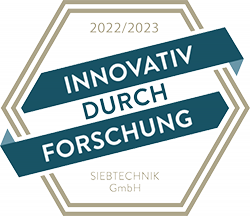Screen scroll centrifuge CONTURBEX
The CONTURBEX is a continuously operating, filtering centrifuge with a very wide range of applications.
In the early 1950s, the commercial breakthrough in polyethylene production came with the development of the Ziegler-Natta catalyst process, which uses titanium-based catalysts to enable production at reaction pressure and eventually lower the reaction temperature to normal pressure and room temperature. For this invention, Karl Ziegler and Giulio Natta were awarded the Nobel Prize in Chemistry by the Royal Swedish Academy of Sciences in 1963.
From 1943 to 1969, Ziegler was director of the Max Planck Institute for Coal Research, founded in 1912, in Mülheim an der Ruhr, Germany, about 5 km from SIEBTECHNIK TEMA GmbH, which has been producing centrifuges at this site since 1922.
Up to now the raw material e.g. for Polyethylene derivatives is natural gas and crude oil.
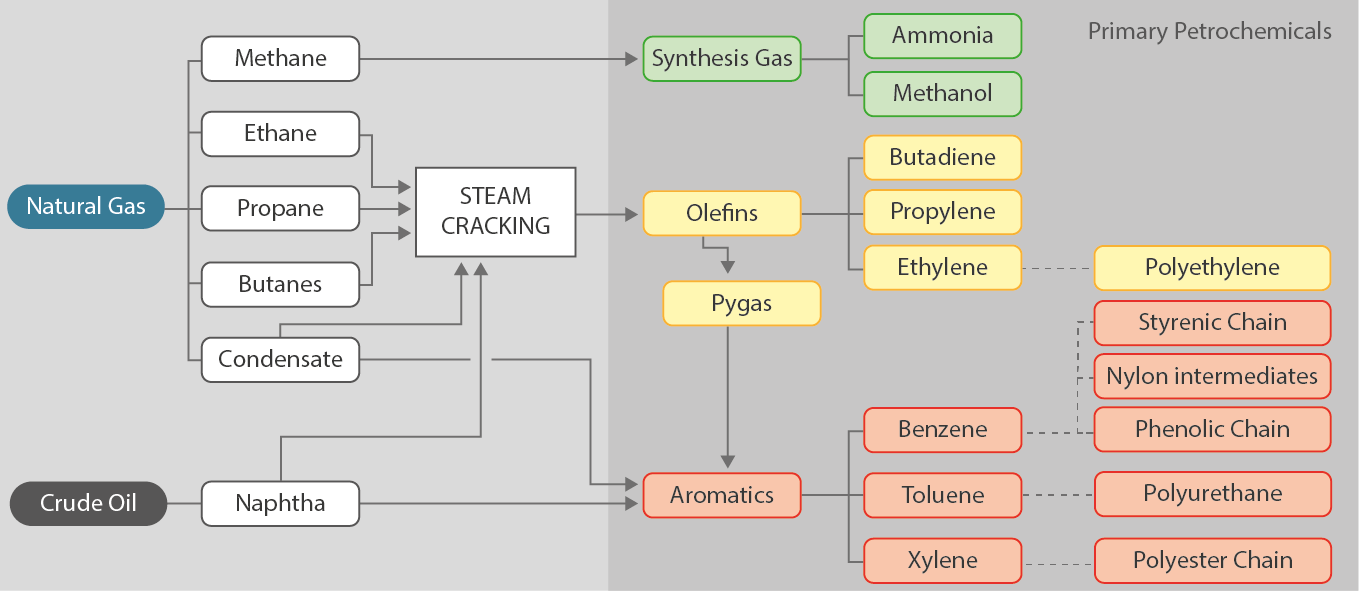
All of these uses cause, among other things, carbon emissions during the production, use and/or end-of-life of these products. Therefore, carbon-neutral fossil fuel substitutes must be used to achieve the overall goal of net zero carbon emissions.
In the near future, the industry will turn to sustainable feedstocks for the chemical industry, such as Synthetic Ethylene. Here, specific power-to-chemicals processes are already in place, for example converting CO₂ from biogas and green hydrogen (H₂) into Methanol using renewable energy. This Methanol can be catalytically converted into Synthetic Ethylene using the Methanol-To-Olefins (MTO) process.

Beispielhafter synthetischer Produktionsprozess
The Ziegler- and metallocene-based catalyst families have proven to be very flexible in the copolymerization of ethylene with other olefins and form the basis for the wide range of polyethylene resins available today.
Depending on the process, different types of PE with different properties can be produced. They are categorized based on their density, molecular weight and branching structure. Different types of polyethylene result, such as high density polyethylene (PE-HD or HDPE), linear low density polyethylene (PE-LLD or LLDPE) and low density polyethylene (PE-LD or LDPE).
The industry introduced solution processes, gas-phase processes and slurry processes to improve the specific properties of HDPE and created an expanding variety of HDPE.
*Into these Polyethylene applications SIEBTECHNIK TEMA has successfully supplied centrifuges.
Immediately after the invention of the process and its first implementation in industrial production, SIEBTECHNIK TEMA supplied the first decanter centrifuges for solid-liquid separation of HDPE in the 1960s. SIEBTECHNIK TEMA continuously working decanter centrifuges are used in the slurry HDPE processes where HDPE solid particles are separated from Hexane or Pentane after multiple reaction steps.
Today‘s multiple-reactor suspension processes enable the production of a wide range of HDPE derivatives.

HDPE Prozess
Processes with a multi-stage reactor cascade using Ziegler catalysts that tailor the multimodal molecular weight distribution required for each HDPE grade are used worldwide.
The high demand for HDPE in industry and private households today requires large production plants that manufacture several hundred thousand tons of HDPE annually with SIEBTECHNIK TEMA decanters.
The trend is clearly towards large decanters, which SIEBTECHNIK TEMA has significantly developed further so that they can provide many years of low-maintenance, high-performance service in the gas-tight process.
In addition to the excellent separation results, our customers appreciate the flexibility of our decanter centrifuges even for difficult HDPE products with very high wax contents at extremely high solids throughputs.
Many other production slurry processes exist.
Novel recycling processes that separate HDPE from composite material and reprocess it into granules using CONTURBEX filtering centrifuges from SIEBTECHNIK TEMA..
The material is processed into fibers and then spun into yarn that is used to make armor, cut-resistant gloves, and other demanding applications such as high-performance sailing, suspension lines on sport parachutes and paragliders, rigging for sailing, kites, and kite lines for kite sports, and in the medical industry for fibers for surgical applications and hip and knee prostheses.
UHMW-PE has polymer chains many times longer than HDPE. Separation from the solvent is accomplished with gas tight SIEBTECHNIK TEMA decanter centrifuges.
In the production of CPE SIEBTECHNIK TEMA filtrating centrifuges made of High Alloy Stainless Steel or Titanium are used. The processing takes place under usage of hydrochloric acid.
Centrifuge components must not only withstand high forces, but also process-related stresses such as corrosion, wear and high temperatures. Cost and availability of materials also play an important role. Our customers select the necessary product-contacting materials according to these very specific requirements.
Duplex and high-alloy stainless steels, Hastelloy® and titanium materials for a wide variety of processes and stresses are part of our daily business in centrifuge construction. Our quality management has developed very detailed and cost effective processes for design, manufacturing processes and component testing based on European guidelines.
Typical sheet metal and forging materials for centrifuge wetted components include

The CONTURBEX is a continuously operating, filtering centrifuge with a very wide range of applications.

The SIEBTECHNIK TEMA SHS pusher centrifuge has established itself and proven itself as a modern high-performance unit in many industries.
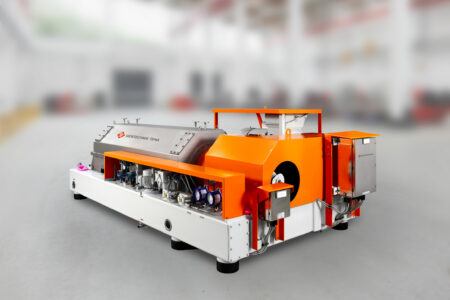
Our decanters are individual, functional and versatile. They offer highly efficient separation of even the finest solids with almost complete clarification of the liquid phase.
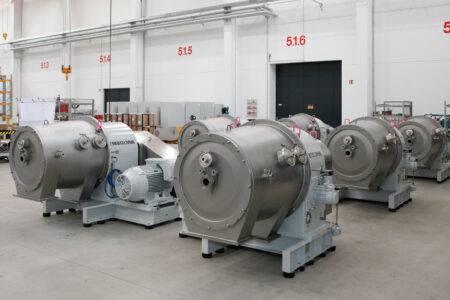
Due to the special geometry of the rotating parts, the SHORTBOWL decanter centrifuge - solid bowl is best suited for separating fine solid particles with a high specific density difference to the liquid phase.
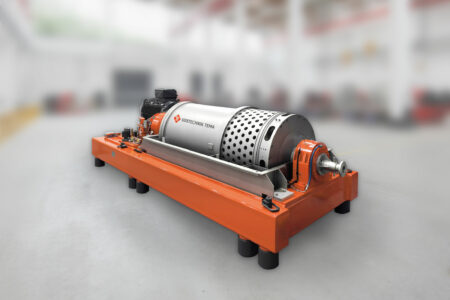
It combines the process engineering advantages of a sedimenting decanter and a filtering centrifuge in one machine.

SIEBTECHNIK TEMA Remote Advanced Monitoring
Your digital module for preventive centrifuge maintenance - with optional cloud connection

We have developed an oil quality monitoring system specially tailored to our centrifuges. Reduce downtimes and extend your machine running time with the SIEBTECHNIK TEMA Fluid Observer!

Find the right contact for your region.
We have the right solution for every task. And if not, we’ll work with you to find one. Get in touch with us!
Our specialists will be happy to advise you individually on site or remotely, and are available to answer any questions you may have. Send us a message using our
